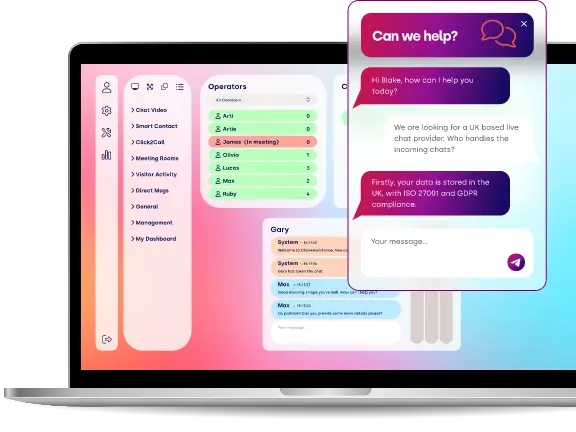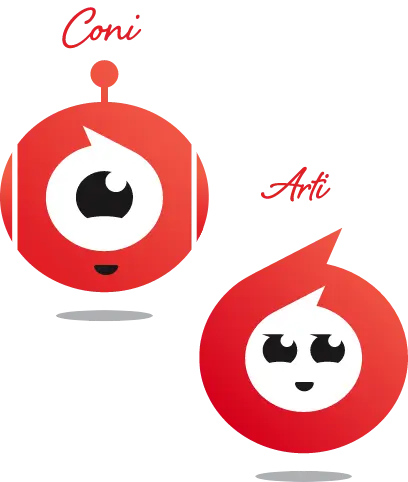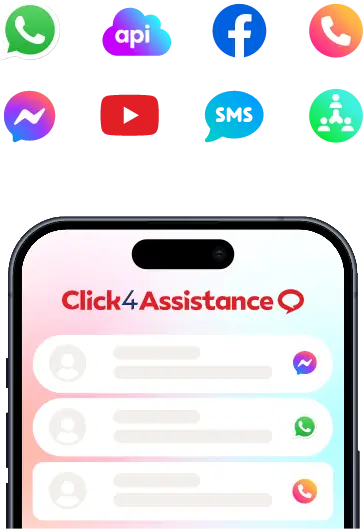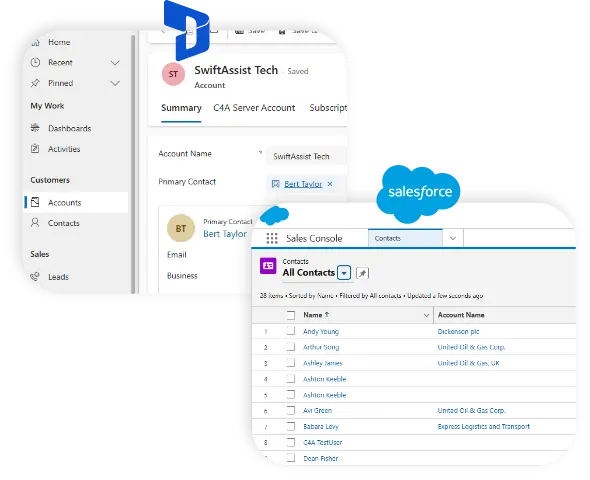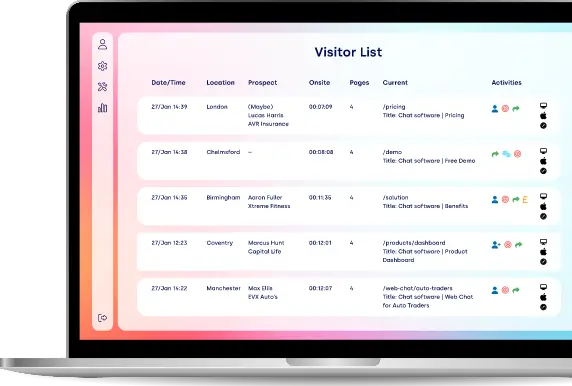Advantages and Benefits of Chatbots: Why They’re Game-Changers
Chatbots are transforming customer service by providing instant assistance, reducing costs, and operating 24/7 – for companies to offer quicker and more intelligent experiences without overusing resources.
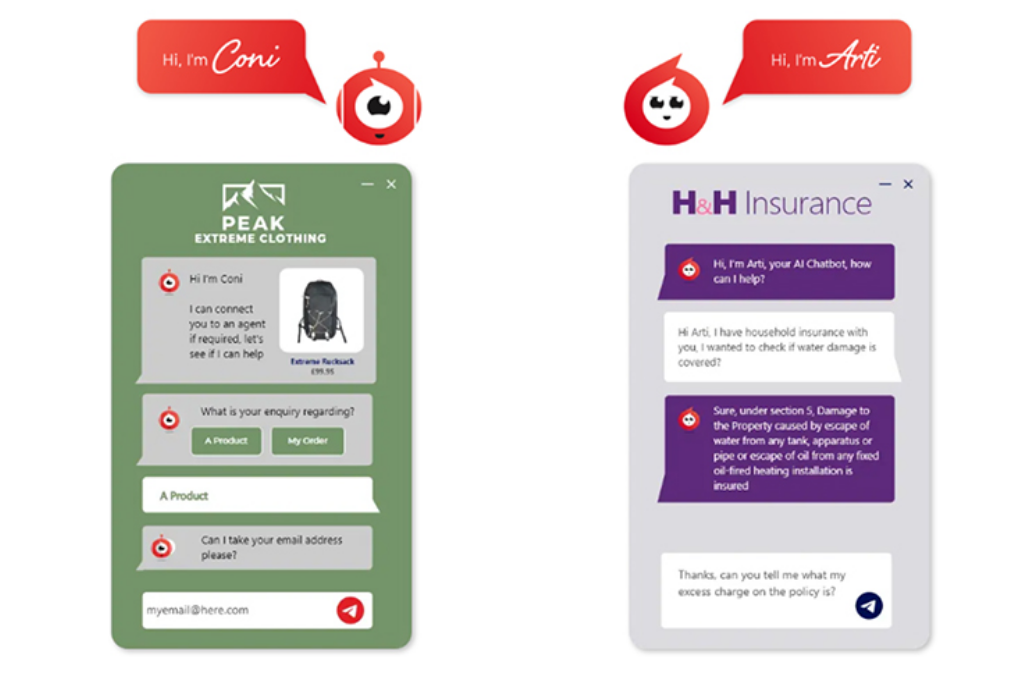
If you’ve ever engaged with a customer support agent online, there’s a strong possibility you were actually communicating with a chatbot — rather than a person working in an office at 11 p.m. These AI-driven assistants have seamlessly integrated into our daily digital experiences, aiding us in tracking orders, resolving issues, and even purchasing new footwear. They are no longer just science fiction curiosities featured in technology publications; they are practical tools that companies utilise every day to enhance efficiency and satisfy customers. Whether you’re ordering food via a messaging service or checking your bank account at midnight, it’s likely a chatbot is operating behind the scenes to simplify your life. But what is it about these virtual aides that makes them so essential? And why are businesses of all sizes hurrying to incorporate them into their websites, applications, and social media channels?
For organisations looking to implement chatbots, it’s not merely about following a trend — it’s about developing a sustainable customer engagement strategy. Tools such as Click4Assistance’s chatbot creation guide, their business-oriented chatbot builder, or a specialised chatbot solution for customer support and service offer comprehensive assistance for initiating the process. They also provide valuable insights into automated customer service, which can revolutionise the way businesses manage large volumes of enquiries. In summary, these solutions are no longer just optional enhancements — they are crucial elements of a contemporary service approach.
What Are Chatbots?
Before we dive into the impact of chatbots across industries, let’s define what a chatbot is. A chatbot is a computer program that is designed to mimic human conversations. These programs can address user enquiries, guide individuals through processes, and execute actions such as scheduling appointments or completing transactions. Typically, interactions occur via text-based chat interfaces on websites, mobile applications, or within omnichannel platforms like WhatsApp, Facebook Messenger, and SMS. Additionally, some chatbots utilise voice recognition, interfacing through devices such as Amazon Alexa or Google Assistant, enabling users to speak their requests and receive immediate responses.
Currently, there are three predominant types of chatbots employed by organisations. The first category comprises rule-based chatbots, which operate according to a decision tree logic. They respond based on a set of predefined options or scripts, making them highly effective for simple, repetitive tasks—such as informing customers about return policies—but less capable of handling unexpected or complex enquiries. The second category includes AI-powered chatbots, which leverage natural language processing (NLP) and machine learning algorithms to analyse and interpret user intent. These chatbots facilitate more nuanced and sophisticated interactions, continuously improving their performance by learning from each engagement. The third type represents hybrid chatbots, which integrate rule-based frameworks with AI capabilities. This combination allows for predictable, scripted responses while maintaining the flexibility to adapt to dynamic conversations.
You have likely interacted with all three types of chatbots without explicit awareness. For example, encountering a pop-up chat window on an airline’s website asking, “Can I assist you with check-in?” is indicative of a rule-based system. Conversely, using voice assistants like Siri or Alexa to play music, set reminders, or seek information exemplifies AI-driven chatbots. Hybrid models are increasingly prevalent in customer service environments, where they manage routine enquiries automatically and escalate complex or emotionally sensitive issues to human agents.
Sinch quotes Gartner, “By 2027, chatbots will become the primary customer service channel for approximately 25% of organizations,” underscoring the substantial shift in corporate communication strategies. This trend signifies that chatbots are no longer mere automation tools but pivotal elements in delivering enhanced customer experiences and operational efficiency.
Advantages of Chatbots
- 24/7 Availability
Consider the last time you required assistance outside of standard operating hours. Perhaps you attempted to reset your online banking password at midnight or sought information about a flight while abroad. Traditionally, such situations necessitate waiting until the next business day or enduring lengthy hold times in hopes of reaching a support representative. Chatbots effectively address this issue by delivering support around the clock, ensuring help is available whenever needed. Unlike human agents, they do not require rest, holidays, or sick leave; they are capable of assisting thousands of customers simultaneously without showing signs of fatigue.
“Customers expect help whenever they need it, not just when your office lights are on. Chatbots make that expectation a reality.” - Elena Morris, Customer Experience Specialist.
- Cost Efficiency
Running a full-fledged customer service department can really add up. You’ve got to hire, train, and pay your agents, and when demand increases – like during Christmas or right after launching a new product – you often find yourself needing to bring in temporary staff at higher rates. That’s where chatbots come in handy; they can help cut down on these costs by taking care of repetitive tasks that don’t really need a human touch. Things like resetting your passwords, tracking orders, and answering common questions can be handled instantly by bots, freeing up your team to focus on more meaningful interactions.
A report by ChatMaxima highlighted that chatbots could save businesses up to 30% on customer support costs by handling repetitive enquiries and reducing the need for a larger support team.
- Instant Response Times
In today’s fast-paced digital world, speed is everything. Customers want quick answers – whether they’re searching online, scrolling through social media, or shopping on apps. Any delay can lead to frustration and even lost sales. That’s where chatbots arrive. They provide instant responses, cutting out the long wait times that often come with traditional customer service methods like phone calls or emails. Unlike human agents, who can help one person at a time, chatbots can assist hundreds or even thousands of users simultaneously, all while maintaining high-quality responses.
IBM have highlighted that businesses leveraging chatbots for quick query resolutions experience higher customer retention and engagement rates, demonstrating that speed is not just a convenience but a key factor in long-term royalty.
- Consistency in Communication
One of the most valuable yet often overlooked perks of chatbots is their ability to deliver consistent, accurate, and brand-aligned responses every single time. Unlike human agents, who might interpret policies in different ways or respond with varying tones, chatbots stick to strict guidelines and programmed logic. This ensures that every customer receives the same information, which is crucial for building trust and maintaining credibility.
As noted by HubSpot, a remarkable customer experience promotes loyalty, helps retain customers, and encourages brand advocacy.
- Data Collection and Analytics
Every time a chatbot interacts with a customer, it’s like striking gold. Chatbots do so much more than just answer questions – they collect data, track user behaviour and provide insights that can really change how a business operates. By looking at everything from the most frequently asked questions to peak hours of customer activity companies can get to know their audience better than ever before.
For example, a retail chatbot notices a surge in questions about a specific product feature. With that insight the business can adjust its marketing, product descriptions or even change the product to meet customer demand.
- Multilingual Support
As companies expand their reach around the world, being able to communicate effectively with customers in different languages becomes increasingly important. Chatbots provide instant multilingual support, breaking down language barriers that would usually require hiring specialised staff for each region. This feature ensures that customers feel recognised and valued, regardless of their location or preferred language.
For instance, a single chatbot can handle enquiries in English, Spanish, French, Mandarin, and more, smoothly switching between languages based on what the user selects.

See Coni the Chatbot in Action for Automotive Industries
From automotive to finance and education, our industry-tailored chatbots are designed to meet your specific needs. Discover how chatbots can enhance engagement and streamline customer experiences.
Key Benefits of Chatbots
- Enhance Customer Experience
In today’s cutthroat business landscape, how customers feel about their experience can make or break a company. That’s where chatbots are introduced, creating positive and unforgettable interactions by delivering quick, personalised and reliable service. Unlike traditional support methods that often leave customers stuck on hold or navigating through confusing phone menus, chatbots offer instant help tailored to each person. They can recognise returning customers, recall previous conversations, and even suggest products or services based on what the customer liked before.
- Boosted Sales and Lead Generation
Chatbots aren’t just there to lend a helping hand; they also play a vital role in boosting sales and generating leads. By asking smart questions, they can evaluate potential customers, guide them to the right products and gently nudge those who are on the fence with timely suggestions. Take, for instance, a chatbot in the real property sector – it can set up property viewings on the spot or connect interested buyers with agents, speeding up with the sales process while keeping prospects engaged.
# - Support for Human Agents
Chatbots take care of the simple, repetitive questions – like resetting passwords or tracking orders – so that human agents can focus on the issues that really require empathy and problem-solving skills. This balance not only lightens the load and helps prevent staff burnout but also ensures that customers with more complex needs receive prompt and thoughtful assistance.
- Integration with Other Systems
Contemporary chatbots are far from being isolated tools; they seamlessly connect with CRMs, payment gateways, and scheduling apps. Imagine a chatbot that can effortlessly set up appointments, process payments, and update records in real-time. These integrations help eliminate hurdles for both businesses and customers, making processes that used to require multiple steps or manual data entry much simpler.
- Business Scalability
When shopping becomes hectic, like during busy sales or new product launches, chatbots can handle thousands of conversations simultaneously without needing extra staff. This capability helps businesses maintain high service quality and quick responses, even at the busiest times, ensuring that customers are happy when it matters most.
Real-World Applications of Chatbots
- E-Commerce
Chatbots are becoming essential players in the e-commerce world, helping customers find products, keep track of their orders, and even suggest items based on what they’ve been browsing. They can also boost sales by recommending related products right at checkout. For example, if someone adds a smartphone to their basket on an electronics site, a chatbot might pop-up with a suggestion for headphones, which can really increase the total purchase amount.
- Healthcare
In the world of healthcare, chatbots play a vital role by helping patients book appointments, answering questions about symptoms, and sending medication reminders. They ease the burden on call centres by offering support around the clock. For instance, a clinic’s chatbot can evaluate symptoms and guide patients to the right service, ensuring that urgent cases get the attention they need.
- Finance
Financial institutions and fintech companies are increasingly turning to chatbots for a variety of tasks, such as checking balances, sending fraud alerts, and reminding customers about payments. These handy bots give users quick and secure access to essential services. For example, a banking chatbot can swiftly verify a transaction or temporarily disable a card within seconds if it detects any unusual activity.
- Travel
Travel chatbots are a game-changer when it comes to booking flights, checking itineraries, and handling those last-minute changes. For example, if a flight gets cancelled, an airline’s chatbot can quickly rebook a traveller, saving them both time and stress. Hotels are also getting in on the action, using bots to recommend dining spots or local attractions, which really enhances the guest experience.
- Education
Educational chatbots are a fantastic resource for students, giving them easy access to study materials, answering questions about their courses, and keeping them updated on important deadlines. For instance, a university chatbot can help students navigate the application process or guide them to financial aid options, which can really lighten the load of administrative tasks.
The Evolution of Chatbots
- Progress in AI and NLP
With the rapid progress in artificial intelligence and natural language processing, chatbots are becoming increasingly engaging and user-friendly. They’re getting much better at understanding context, tackling complex questions, and even picking up on emotions through tone and word choice. For example, instead of just spitting out robotic answers, a future chatbot might notice when a user seems upset and adjust its tone to show empathy, providing comfort before jumping into solutions.
- Voice Integration
With the rise of voice assistants like Alexa, Siri, and Google Assistant, voice-enabled chatbots are stepping into the spotlight as the next big thing. These bots allow users to interact hands-free, which is perfect for situations like driving or multitasking. Just imagine a customer checking their account balance with a banking chatbot while whipping up breakfast, or effortlessly reordering groceries through a smart speaker.
“Voice-enabled bots are the next leap – they’re faster, more natural, and hands-free.” – Lucia Fernández, Product Lead at VocaTech
- Ethical and Privacy Considerations
As chatbots continue to develop, the ethical issues surrounding transparency, bias, and data privacy are becoming more crucial than ever. It's essential for companies to clearly inform users when they're chatting with a bot, avoid biased decision-making, and handle customer data responsibly. Regulations like GDPR and CCPA already set the groundwork for these practices, but as AI technology advances, we'll need even stricter safeguards to maintain trust.
- Enhanced Personalisation via Data
In the future, chatbots are set to harness cutting-edge analytics to anticipate customer needs even before they voice them. Imagine a travel chatbot that remembers a returning customer's favourite spots, budget limits, and travel plans, offering tailored vacation ideas right off the bat. This kind of hyper-personalisation turns chatbots into proactive assistants rather than just reactive tools.
Manage Customer Service with Your Own AI Agent
Meet Arti, your fully trainable AI Agent. Use your website and documents to teach Arti how to deliver fast, accurate, and personalised customer support.
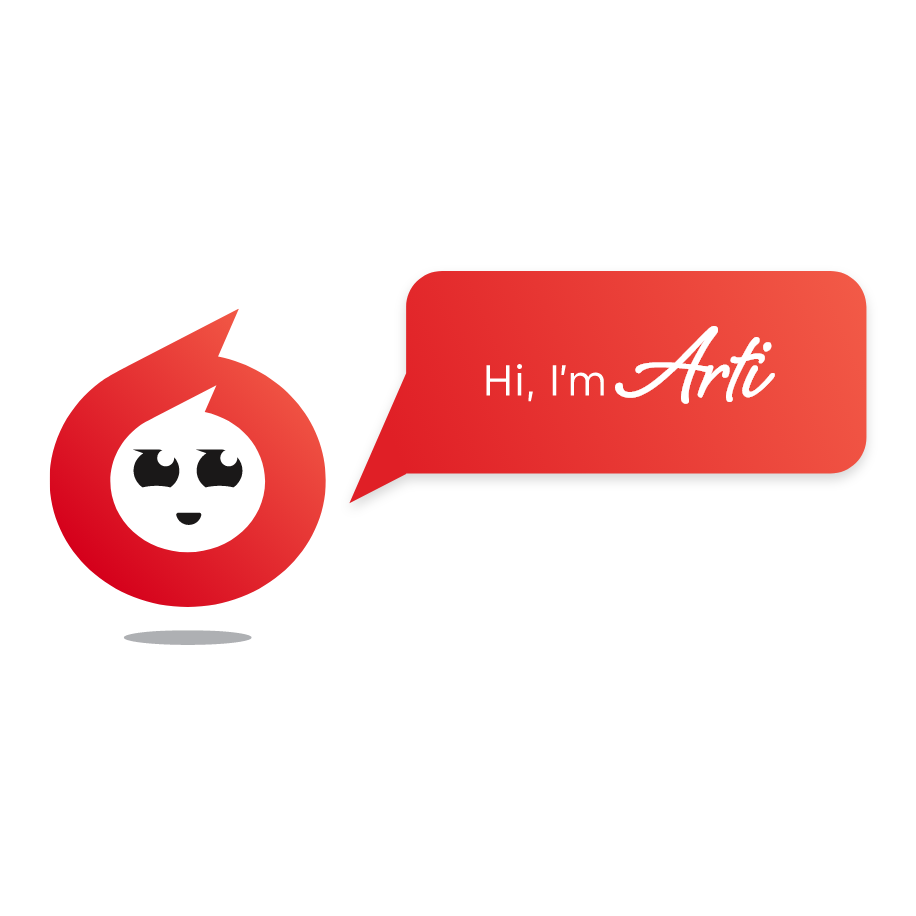
Frequently Asked Questions (FAQs)
- Are chatbots only useful for big companies?
A: Not at all! Small and medium-sized businesses can benefit just as much. They use chatbots to handle common questions, qualify leads, and offer support without needing a whole team.
- Do customers really like chatting with chatbots?
A: Absolutely – as long as they’re done right. Customers appreciate quick and accurate answers. The key is to design bots that feel helpful instead of robotic, and to know when it’s time to bring in a human representative.
- Can chatbots work with existing software?
A: Definitely. Many chatbots can seamlessly integrate with CRMs, payment systems, and scheduling tools, helping businesses streamline their processes without having to start from scratch.
- How safe are chatbots?
A: Modern chatbots follow strict data protection laws, and businesses can implement encryption and authentication to protect customer information. Choosing reputable chatbot providers ensures high security standards.
- Will chatbots replace human jobs?
A: Not entirely. Chatbots handle repetitive tasks, freeing up humans to focus on more complex issues or provide personalised service. They’re meant to enhance human abilities, not replace them – the best teams include both people and bots.
Conclusion
The advantages and benefits of chatbots have come a long way, evolving from a niche topic in tech discussions to a vital part of how businesses interact with their customers today. No longer just a novelty, these intelligent tools have become essential for modern customer engagement. They not only help save time and cut costs but also ensure that service remains consistent and top-notch, all while offering businesses valuable insights that can inform their decision-making. Whether it’s a small startup looking to tap into a global audience or a large corporation handling thousands of enquiries at once, chatbots are truly changing the game in customer relations.
Thanks to rapid advancements in artificial intelligence, natural language processing, and voice technology, today’s chatbots are smarter, faster, and more user-friendly than ever before. They do far more than just answer simple questions; they can integrate with customer relationship management systems, simplify complex processes and even just anticipate what customers might need – shifting the focus from just reaching to proactively engaging.
Companies that embrace the advantages of chatbots now will set themselves up for scalable, future-ready service models, giving them a leg up in a digital-first world. In an era where customers expect quick responses, personalised experiences, and 24/7 availability, chatbots have transformed from being a nice-to-have to an absolute necessity.
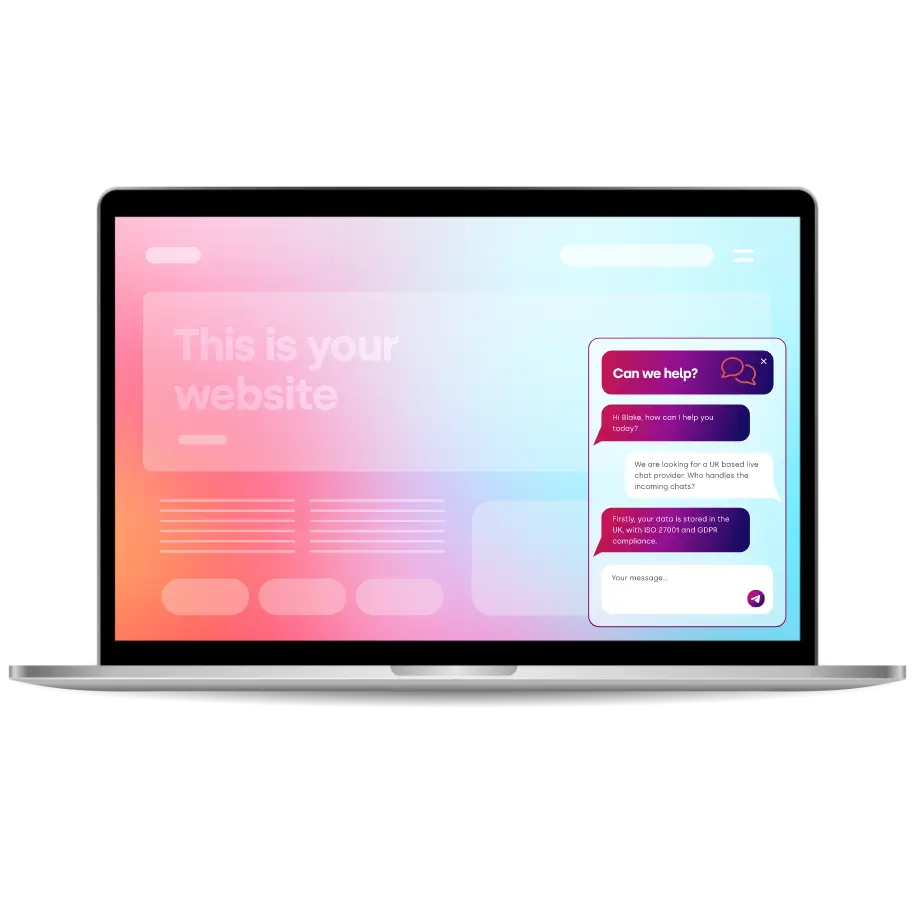
Thousands Trust Us. Will You?
From live chat to AI-powered chatbots and social integrations, Click4Assistance powers real-time engagement - fully UK hosted and trusted across industries.
